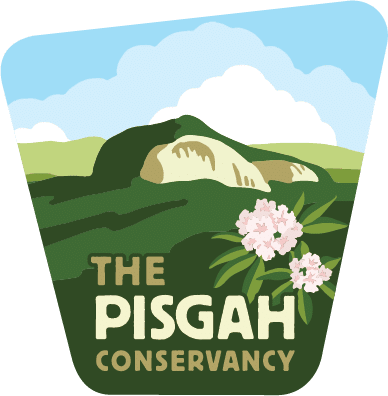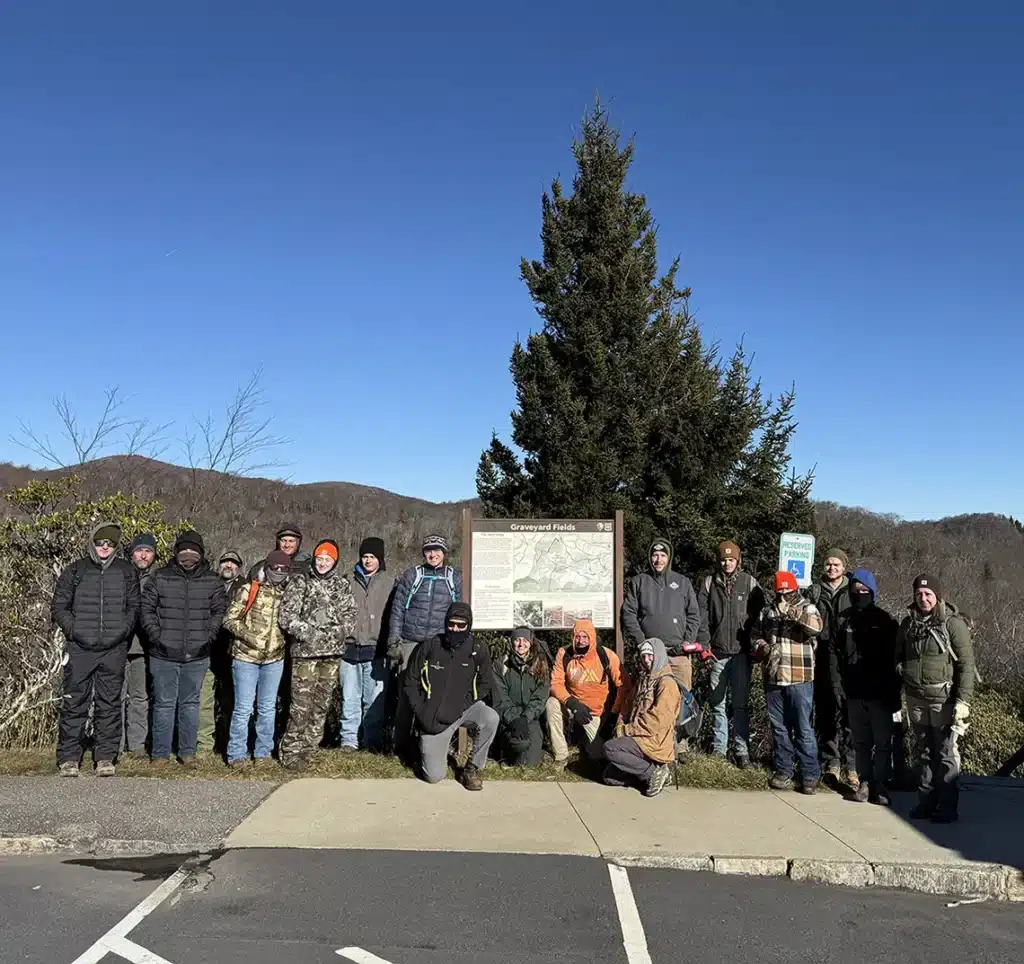The first of many plantings
On a cold yet sunny day in December 2024, we partnered with Southern Highlands Reserve, the National Forest Foundation, the North Carolina Wildlife Resources Commission, the U.S. Forest Service, and student volunteers from Rosman High School to plant red spruce (Picea rubens) seedlings in the Graveyard Fields area.
The day before the planting, our Trail Specialist and members of our Invasive Plant Management Crew worked with U.S. Forest Service personnel through frigid winter conditions to stage materials. Their staging work allowed for an efficient planting process the following day.
The red spruce trees planted at Graveyard Fields that day were propagated at Southern Highlands Reserve from seeds collected in Pisgah. This planting, the first of its kind for Graveyard Fields, marks the beginning of a multi-year restoration project that will add about 10,000 trees to the rare forests of the Southern Appalachian Mountains.
This planting marks the start of a long-term commitment to supporting spruce-fir restoration in the Pisgah Ranger District. It also marks the first on-the-ground action of TPC’s large-scale rehabilitation project in Graveyard Fields, which will include trail construction and rehabilitation, stream restoration, and spruce restoration.
About spruce-fir forests
Found at the highest and coldest parts of the Southern Blue Ridge, the Southern Appalachian spruce-fir forests are characterized by high moisture – often immersed in cloud cover – and are widely considered a relic from the last ice age. These areas are home for plants and animals found nowhere else in the south, and in many cases, nowhere else in the world. They’re home to the federally listed spruce-fir moss spider and the Carolina northern flying squirrel; as well as a long list of species of conservation concern including the northern saw-whet owl, brown creeper, black-capped chickadee, and several salamanders. – Via the Southern Appalachian Spruce Restoration Initiative (SASRI)
This project was implemented in partnership with SASRI, a partnership of diverse interests with a common goal of restoring spruce ecosystems across the high elevation landscapes of the Southern Blue Ridge. SASRI is comprised of private, state, federal, and non-governmental organizations which recognize the importance of this ecosystem for its ecological, aesthetic, recreational, economic, and cultural values.
“This area of the Pisgah is special for many reasons but it’s also in need of important restoration which makes the start of this project very exciting. Our partners have shown great perseverance over the last 6 years as we’ve developed this project and they’ll be just as critical as we implement it on the ground as well.”
– Dave Casey, District Ranger for the Pisgah Ranger District



